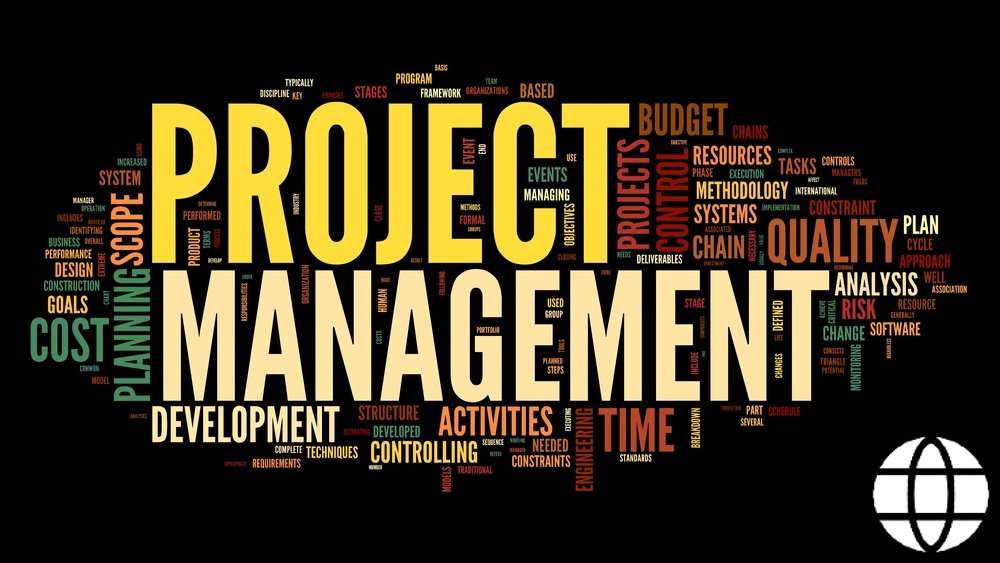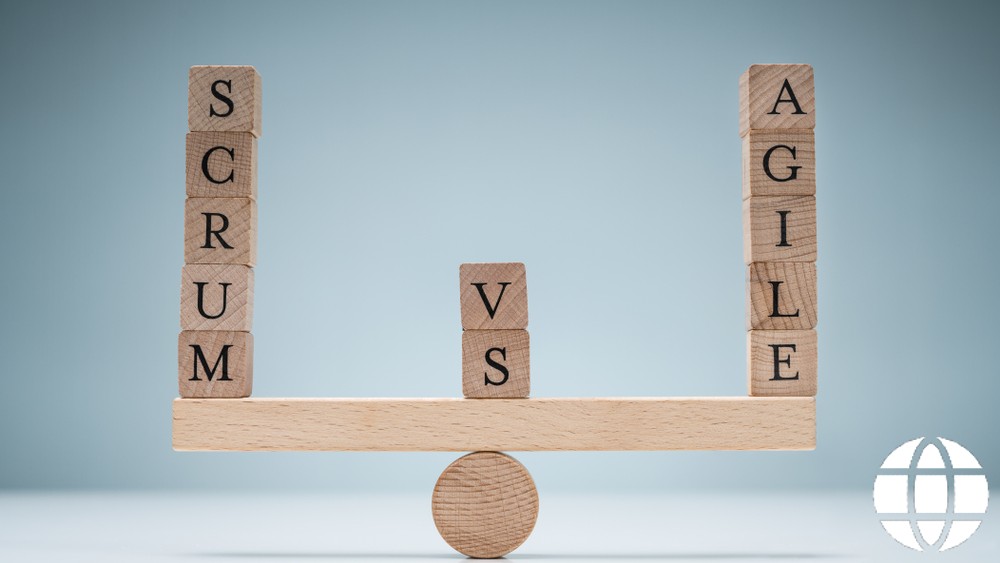Welcome, everyone! This is the most informative piece on Waterfall project management you’ll find on the internet.
At the end of this educative piece, you’ll be absolutely sure what this methodology is all about and when and how to apply it in your projects successfully.
Also, when you decide to use this approach, we’ve equipped you well enough in this guide to know the pitfalls to expect and how to manage them.
In this article, you will learn about:
Here we go!
What Is Waterfall Project Management Methodology?
When considering a project management methodology, there are various approaches such as kanban, scrum, six sigma, lean, critical path, etc.
Water project management methodology is also one of those workable approaches that you might have heard as well.
This is sequential or linear process management.
It is made up of various discrete phases.
A new phase will begin only when the previous phase has been completed, and each phase’s completion is terminal.
Waterfall management prevents you from returning to a previous phase to make amendments.

Just like a real waterfall, once it is all systems go, it goes on and on with no room for turning back.
The only way to carry out amendments or revisit any phase is to return to the starting point at phase one and begin again.
The Waterfall method might sound extreme, but the system’s history requires it.
Most people want to compare waterfall vs agile methodology, but the fact remains that both are good depending on the type of project.
However, the waterfall project management approach is popular with non-software industries such as manufacturing and construction, where the system was naturally born out of necessity.
In such industries, the project phases occur sequentially.
For example, there is no way you can begin raising the walls of a building if the foundation hasn’t been set firmly in construction.
It is also impossible to go back and redo the foundation once you have begun building the walls.
Once a building project begins from the ground, all systems go, and no turning back, which is why every phase must be done correctly.
For the project to run successfully by this methodology, proper planning must be carried out, and the project’s requirements must be clear from the beginning.
Everyone who is part of the project must be informed of the requirements, understand their role, and do their bit.
Documentation of the information must occur and proper distribution to everyone on the project.
Outlining the information on a flowchart is easier because it shows how the team is progressing in a single glance.
Your team can understand and do references at a glance.
The documentation you provide will guide members throughout the process.
Remember, documentation is very important in the waterfall project methodology.
When followed closely, it will offer the right guidance in the creation process.
It will also provide project milestones and make determining progress a simple matter.
Everyone on the team is updated throughout the project.
Agile and Scrum, on the other hand, work in sprints – whereby the project is broken into several smaller bite-sized projects that are worked on in a short timeframe.
The next sprint usually depends on the outcome of its predecessor, but today is not about Agile or Scrum, so let’s focus on the phases in a waterfall project.
Waterfall Project Management Phases

There are various waterfall phases, but they will vary from source to source.
Generally, the waterfall workflow is as follows:
Gathering of project requirements
This is the stage where you gather detailed information about what this project needs.
Gathering the information can be done in various ways such as interviews, questionnaires, interactive brainstorming, etc.
A requirements document is created for this purpose.
By the time this phase comes to an end, the project requirements will be strongly established, and everyone on the team will understand and plan on how to do their assigned bit.
System design
After establishing the project requirements, your team can now begin the process of designing the system.
Coding will not happen here in the design phase.
Instead, the team could, for example, establish specs like a programming language or certain hardware requirements.
Implementation phase
This is the phase where coding happens, and programmers can use the information created in the previous stage to make a functional product.
They will use the code in small pieces, which are then integrated at this phase’s end and the beginning of the next.
Testing phase
When the coding is complete, this is where product testing begins.
The testers will find and report any existing problems with the product functionality.
When the project is found to be marred or established as too problematic, it will then go back to phase one for some serious reevaluation.
Delivery phase
Also known as the deployment phase, this is the phase where the product is complete, and the team will submit the deliverables to be released.
Maintenance phase
During this phase, the product has already been deployed and is in possession of the client who is using it.
When issues arise, your project team will work towards creating patches and updates to deal with.
However, if the issues are of great magnitude, this may force the project’s return to phase one.
Waterfall Project Management Benefits
Most manufacturing and construction industries use the waterfall process because this methodology has been very successful for teams in this industry, unlike the agile approach.
There are reasons why many teams embrace it, and the benefits it offers are a major part of this popularity.
The training remains simple
Since waterfall project management thrives through documentation, you can easily add new team members to any project without any complications arising.
You don’t have to get stressed figuring out what a programmer who left the project was trying to do because everything about the project from creation to completion is recorded.
New team members can easily refer to the created documentation to get up to speed and carry on with the project.
In short, waterfall training for new team members is simple.
Easy to measure project progress
The waterfall project management indicates progress in a simple manner.
The milestones that were mapped out during the first phase will make it easy to establish whether the project is moving on schedule or not.
Then the following phases will indicate whether the project is nearing overall completion at any given time because this system does not allow a review of a previous phase.
Therefore, the waterfall system removes a lot of guesswork when it comes to the timeline of the project.
The waterfall schedule is airtight as long as every team member does their job and leaves no detail.
Easy project management
All the above-listed benefits, coupled with the linear nature of the waterfall system, make all projects run by waterfall simple to manage.
Thanks to the sequential system, you will know where the project is whenever you wish to and gauge if that is where it should be.
Instead of struggling to manage a large team, the team manager can now focus on the specific team members working on a certain phase of the project.
Another great thing is that if there are any unexpected outside delays or critical changes, this waterfall system enables you to get your team back on track.
Saves time and money
Obviously, some aspects of this methodology help project managers execute their projects the proper way the first time.
The waterfall project management allows project managers to take time early in the project to create and plan for the project’s requirements.
This will save the project many resources like time and money because there is little room for error.
With every waterfall system project you complete, your processes become refined, and you discover better ways to complete the same kind of project.
Most organizations do repeated projects for different clients.
Construction companies, for example, carry out construction projects all the time.
They could be building a couple of flats, office buildings, industrial space, and so on.
Whatever project it is, as long as it is a building project, a repeatable process can be used to ensure that the project moves smoothly.
This is especially so if they have documented their processes and updated the documentation during the subsequent engagement.
Easy to visualize project
The waterfall system does precise measurements, making it very easy for charting and graphing.
A simple percentage of project completion can be illustrated using a pie chart to communicate project status to the management team quickly.
The Gantt charts are also commonly used in the waterfall methodology to indicate the status of a current schedule, including the dependency relationships between activities.
The Waterfall Project Management Drawbacks

Well, after extolling all the virtues and goodness of this methodology, let us also look at the downsides.
The drawbacks outlined below show how this methodology might not be ideal for all projects.
Not flexible to changes
The waterfall system is known for its highly structured, step-by-step approach when it comes to the production of the end product.
That could be a new row of buildings or a new vaccine.
The inconveniences will happen and jeopardize the entire project if you happen to miss an important detail.
This will force you not only to revert to a previous phase but to begin the entire project from the beginning of phase one.
This can dent the budget and also affect the team morale and client satisfaction.
Also, other stakeholders might be negatively affected.
Extensive planning required
The waterfall system requires all project details to be clearly defined upfront.
This requires extensive and comprehensive planning efforts.
This will include in-depth interviews, seemingly endless brainstorming sessions, and the need to collect a lot of information from as many people as possible.
This is done to prevent missing any pertinent details that could affect the project during its later phases.
This extensive planning can be tasking and take a lot of time, especially if you intend to get your project off the ground soon.
Intense focus on every project phase
The waterfall system requires a phase to be completed before the next phase begins.
The difficulty arises if you miss anything in the previous stage because it is impossible to go back.
This means that you and your team must be extremely careful as you work on a phase and check that every part has been completed before moving on to the next phase.
Missing an important detail means beginning all over again, and this could negatively affect your schedule – resulting in a period of delay which directly impacts the overall schedule.
Impossible to work on multiple projects at once
While other methodologies like agile allow teams to move between faces as they learn what the project is all about, the waterfall doesn’t allow that.
Working simultaneously on different tasks is impossible with waterfall.
Therefore, there is no way to shorten the project timeline.
Also, there are various dependent relationships between tasks, and you will have to complete every task individually before beginning the next one.
This shows how there is little flexibility on a project running on this system.
There may be a few areas where the waterfall steps might overlap, but majorly there is a very strong gating mechanism to ensure that each phase is fully completed before the next phase is begun.
When To Use Waterfall Project Management
Waterfall project management can experience a huge problem when the project requirements are not clear.
This is truer if you and your team only have a general idea of what you want to achieve but have failed to single out the details and specifics.
The linear nature of this system is not suited to discovery which is why the project will be jeopardized when specific requirements are lacking.
This can be a great hindrance in many industries, especially an industry like software development where requirements and workflow keep changing.
Because of its nature of never adapting to change, the waterfall methodology will best work on short projects that are properly defined from the beginning.
Make sure you are certain that the project requirements will not change so that you can run the project smoothly through a clearly defined process.
It becomes simple to manage a project and easy to track from phase one to the last phase with a clearly-defined process.
Industries Where Waterfall Works Best
Generally, the traditional waterfall project management is perfect for projects that meet the following characteristics.

● Projects whose nature allows extensive planning from beginning to the end before they start.
● Projects that don’t need phases to be worked on simultaneously
● Projects with a clearly defined product and process.
Bearing this in mind, let’s see some of the industries where waterfall project management methodology works best:
Manufacturing and construction
Sectors such as construction and manufacturing commonly use the waterfall process model.
With the operating nature of these two industries, waterfall methodology is the best and has always led to a successful project.
For example, construction companies will build houses and commercial spaces from the ground up, and any changes in the construction plan can be very costly.
In most cases, not even possible after the project reaches a certain threshold.
There is the period allocated where the requirements are prepared before the building process begins in a specific order; this makes such a project a perfect match for the waterfall.
Manufacturing is also another industry that requires orderly operations.
Personnel and machines work simultaneously to transform various components into a cohesive product for more processing and eventually a final product ready to be released to the consumer for consumption.
The firm nature of the waterfall project management methodology ensures that the process outcomes are consistent every time.
This, on the other hand, turns out similar products of the set quality all the time as it should be.
Healthcare industry
This is another area that is also a great match for the waterfall methodology.
The pharmaceutical industry is one area of this industry that frequently applies this methodology during scientific research, which is a natural and orderly practice in which the end product is clearly defined.
For example, during new drug development, the team of scientists must form a hypothesis and carry on through a rigorous set of steps.
When they fail along the way, they have no option but to begin all over, and with every new attempt, they form an adjusted hypothesis.
Here is how it goes:
Planning
The team of scientists researches the disease whose cure they are working on.
They conduct lab tests, interview patients, and eventually form a solid hypothesis on the potential cure.
Designing
The team then creates a waterfall project plan on how the hypothesis will be explored and establishes the required resources.
Implementation
The scientists further execute the plan and create this drug that will cure the disease.
Testing
The scientists then carry out the relevant testing to confirm the efficacy of the drug.
When the drug doesn’t work, the research process begins all over again, and they go back to the drawing board.
Maintenance
The scientists further examine the process and note down lessons learned, changes required for the hypothesis, and the development process.
They document all these aspects, which will be very useful on their next drug development project.
Worst Industries for Waterfall Methodology
Generally, the traditional waterfall project management will be unsuitable for projects that have the following characteristics.
● The team can work on the project’s different phases simultaneously
● The project has an unclear end state where the outcome is not known.
● The project requires feedback at various points throughout, and the feedback impacts the processes and deliverables.
Software development
This is one good example of an industry with projects that meet the above characteristics.
Back in time, the waterfall was commonly used in software development.
Today it is used in some cases especially for prepackaged software products like Microsoft Office 2010.
But, with subscription-based software becoming popular in current times, continuous maintenance and customer feedback have been major requirements when new features are created.
This is why instead of developers packaging a single set of features for a given year then beginning a new development process to present a new version of software the next year, customers are frequently presented with the latest version of software every time they log in.
The waterfall framework often doesn’t work here because of the fast evolution of technology that doesn’t make room for planning for an entire year-long project.
Waterfall doesn’t allow you to learn from customer feedback or create innovations in the underlying software.
This is why an agile development approach will always work best in this industry.
Only a few aspects of the waterfall will be implemented in the release process to ensure that testing is fully done and customer communications happen when the product or enhancement is being released in the market.
Conclusion
Waterfall may or may not fit your project management needs, but how else would you know unless you understand what waterfall project management is.
We have covered in detail the waterfall approach to project management.
You now know how this methodology utilizes the sequential process in various industries and simplifies project management.
You now know how you could use some aspects of this methodology to aid you in your project.
In your next project, you can safely choose if the waterfall method is best for you or you will rather go with an agile approach.









